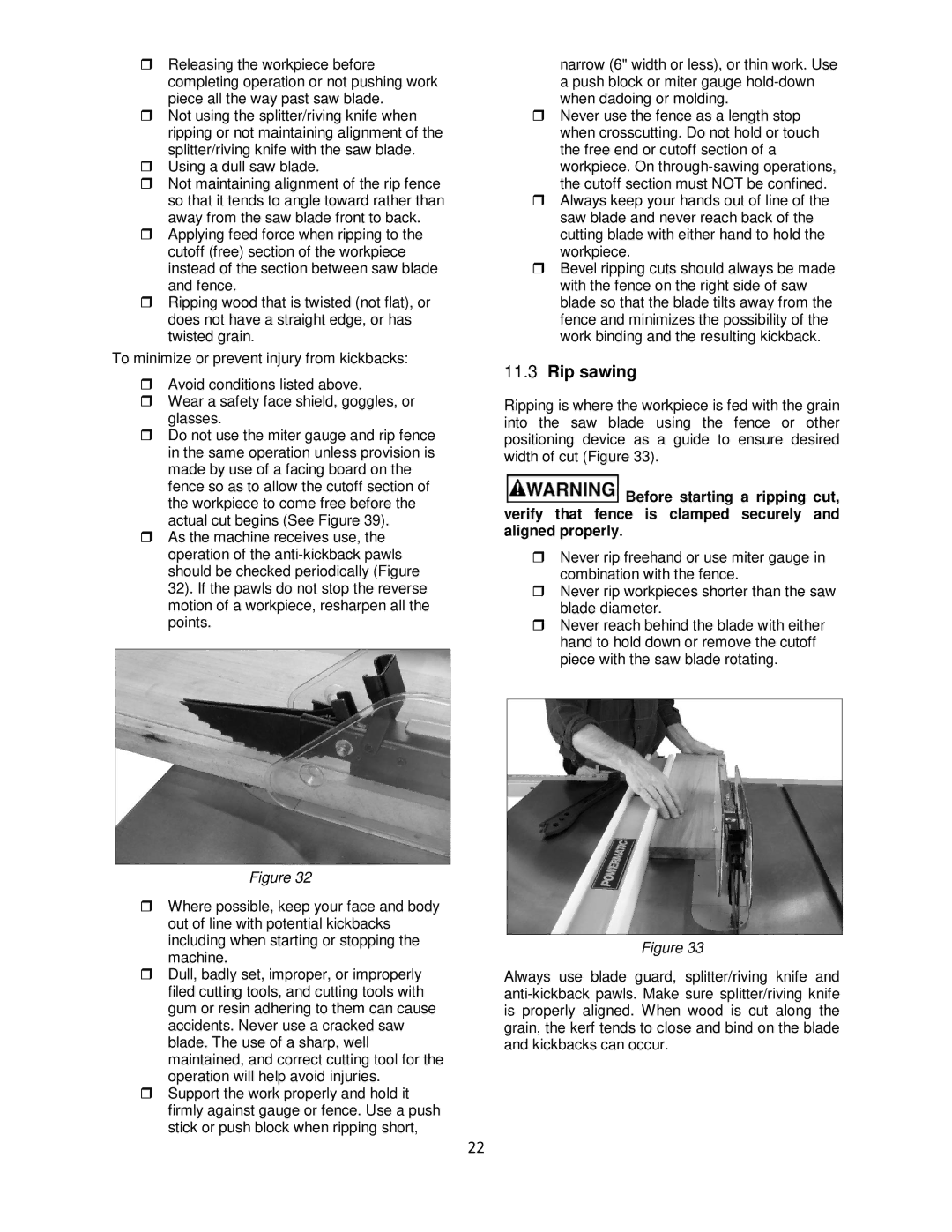
Releasing the workpiece before completing operation or not pushing work piece all the way past saw blade.
Not using the splitter/riving knife when ripping or not maintaining alignment of the splitter/riving knife with the saw blade.
Using a dull saw blade.
Not maintaining alignment of the rip fence so that it tends to angle toward rather than away from the saw blade front to back.
Applying feed force when ripping to the cutoff (free) section of the workpiece instead of the section between saw blade and fence.
Ripping wood that is twisted (not flat), or does not have a straight edge, or has twisted grain.
To minimize or prevent injury from kickbacks:
Avoid conditions listed above.
Wear a safety face shield, goggles, or glasses.
Do not use the miter gauge and rip fence in the same operation unless provision is made by use of a facing board on the fence so as to allow the cutoff section of the workpiece to come free before the actual cut begins (See Figure 39).
As the machine receives use, the operation of the
narrow (6" width or less), or thin work. Use a push block or miter gauge
Never use the fence as a length stop when crosscutting. Do not hold or touch the free end or cutoff section of a workpiece. On
Always keep your hands out of line of the saw blade and never reach back of the cutting blade with either hand to hold the workpiece.
Bevel ripping cuts should always be made with the fence on the right side of saw blade so that the blade tilts away from the fence and minimizes the possibility of the work binding and the resulting kickback.
11.3Rip sawing
Ripping is where the workpiece is fed with the grain into the saw blade using the fence or other positioning device as a guide to ensure desired width of cut (Figure 33).
![]() Before starting a ripping cut, verify that fence is clamped securely and aligned properly.
Before starting a ripping cut, verify that fence is clamped securely and aligned properly.
Never rip freehand or use miter gauge in combination with the fence.
Never rip workpieces shorter than the saw blade diameter.
Never reach behind the blade with either hand to hold down or remove the cutoff piece with the saw blade rotating.
Figure 32
Where possible, keep your face and body out of line with potential kickbacks including when starting or stopping the machine.
Dull, badly set, improper, or improperly filed cutting tools, and cutting tools with gum or resin adhering to them can cause accidents. Never use a cracked saw blade. The use of a sharp, well maintained, and correct cutting tool for the operation will help avoid injuries.
Support the work properly and hold it firmly against gauge or fence. Use a push stick or push block when ripping short,
Figure 33
Always use blade guard, splitter/riving knife and
22
